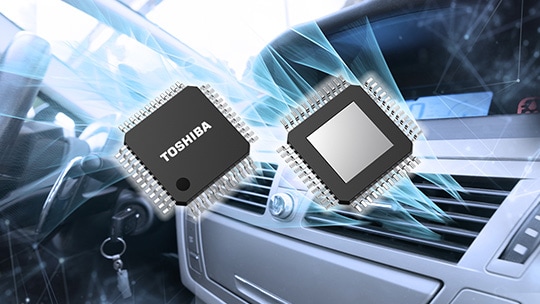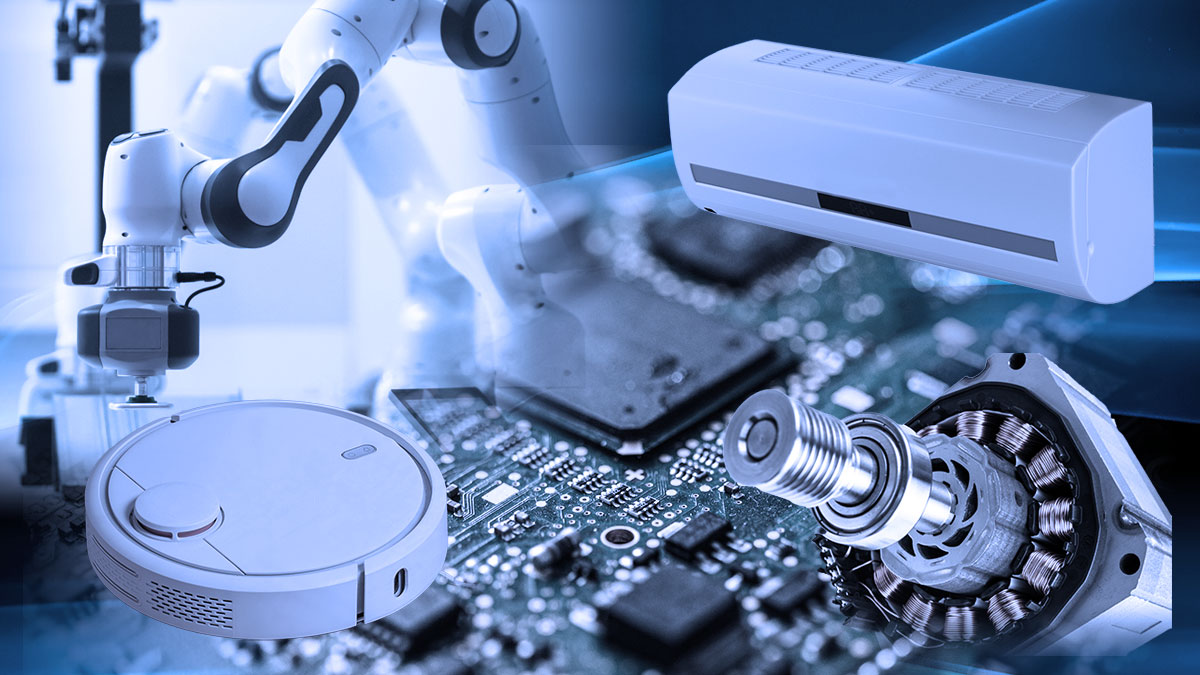-
My ToshibaSemicon
- 반도체 탑
-
애플리케이션Automotive
Body Electronics
xEV
In-Vehicle Infotainment
Advanced Driver-Assistance Systems (ADAS)
Chassis
IndustrialInfrastructure
BEMS/HEMS
Factory Automation
Commercial Equipment
Consumer/PersonalIoT Equipment
Healthcare
Wearable Device
Mobile
Computer Peripherals
-
제품자동차 디바이스
Discrete Semiconductor
다이오드
트랜지스터
로직 IC
Analog Devices
Digital Devices
Wireless Devices
※
: Products list (parametric search)
파워반도체※
: Products list (parametric search)
Isolators/Solid State RelaysPhotocouplers
Digital Isolators
Solid State Relays
Fiber Optic Transmitting Modules
※
: Products list (parametric search)
MOSFETsIGBTs/IEGTs바이폴라 트랜지스터※
: Products list (parametric search)
다이오드※
: Products list (parametric search)
마이크로컨트롤러모터 드라이버 ICIntelligent Power ICs※
: Products list (parametric search)
전원관리IC리니어 IC※
: Products list (parametric search)
범용로직IC리니어 이미지 센서기타 제품용 IC기타 제품용 IC
※
: Products list (parametric search)
-
개발/설계 지원
-
기술 자료
- 구매처
- 부품 번호 & 키워드 검색
- 상호 참조 검색
- 파라미터 검색
- 재고 확인 및 구매
This webpage doesn't work with Internet Explorer. Please use the latest version of Google Chrome, Microsoft Edge, Mozilla Firefox or Safari.
3글자 이상 입력하세요. Search for multiple part numbers fromhere.
The information presented in this cross reference is based on TOSHIBA's selection criteria and should be treated as a suggestion only. Please carefully review the latest versions of all relevant information on the TOSHIBA products, including without limitation data sheets and validate all operating parameters of the TOSHIBA products to ensure that the suggested TOSHIBA products are truly compatible with your design and application.Please note that this cross reference is based on TOSHIBA's estimate of compatibility with other manufacturers' products, based on other manufacturers' published data, at the time the data was collected.TOSHIBA is not responsible for any incorrect or incomplete information. Information is subject to change at any time without notice.
3글자 이상 입력하세요.
Is it okay to make deliberate use of body diodes of MOSFETs?
Yes, body diodes can be deliberately used.
Diodes will be formed between drain and source, due to the structure of the MOSFETs. This is called body diodes or parasitic diodes. The N-channel MOSFET cross-section (Fig. 1.1) and equivalent circuit (Fig. 1.2) is as shown below. (Body diode is shown in red.)
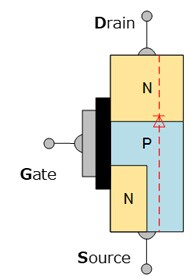
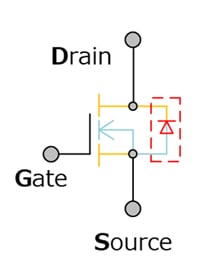
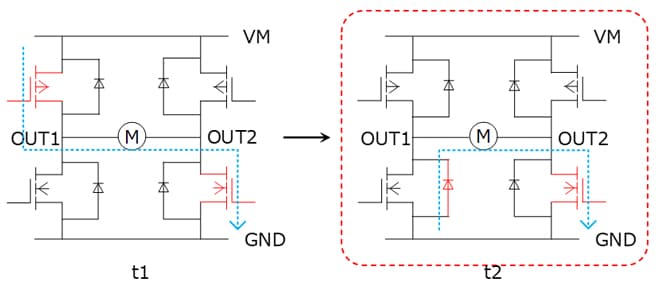
The body diode can be used to recirculate the motor current when operating the motor. For example, the high side MOSFET of OUT1 will be turned ON (t1) and OFF (t2) during asynchronous PWM control as shown in Fig. 2. During OFF (t2) period, the recirculating current will flow through the body diode of low side MOSFET of OUT1.
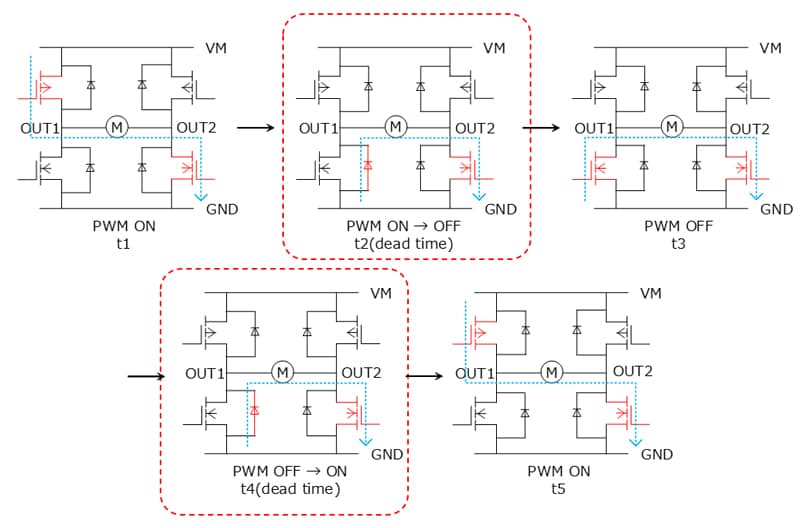
Note that during synchronous PWM control, the low side MOSFET will turn ON during recirculation as shown in Fig. 3, t3. Generally, using MOSFET instead of body diode for recirculation is more efficient and can reduce heat generation.
Also, dead time (t2, t4) is implemented to avoid shoot-through current during synchronous PWM control, in which body diodes will be used for recirculation.
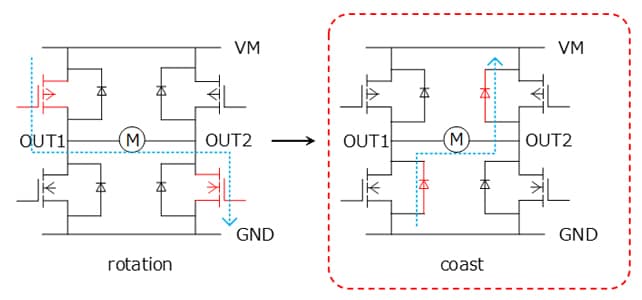
In most cases when setting the motor from rotation state to coast, all MOSFETs will be turned OFF. During which, the body diodes will be used to recirculate the motor current as shown in Fig. 4.
Related Links
The following documents also contain related information.


